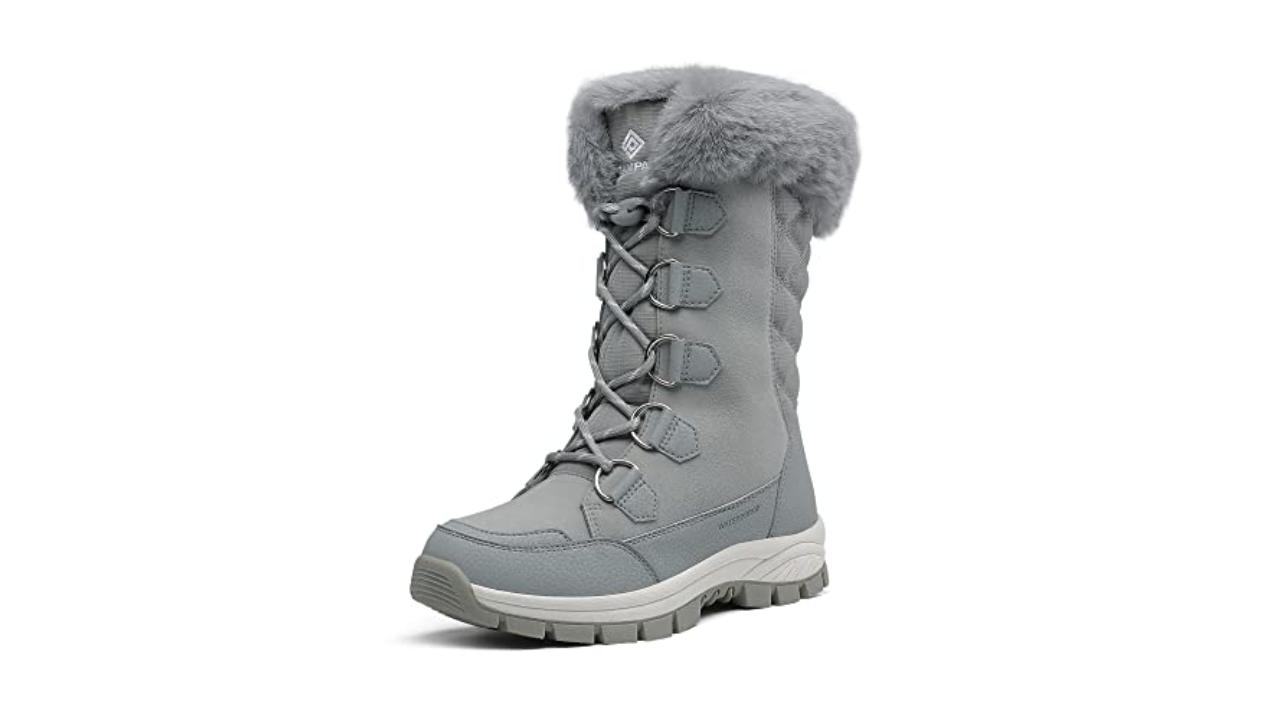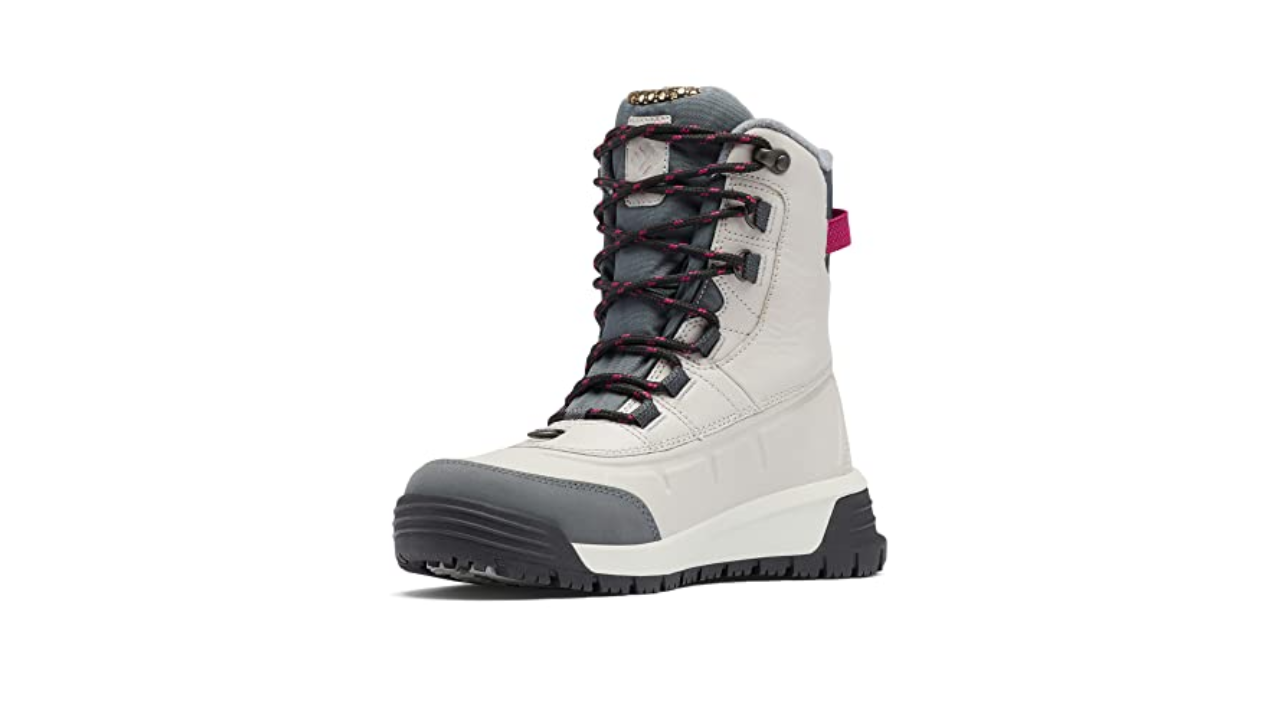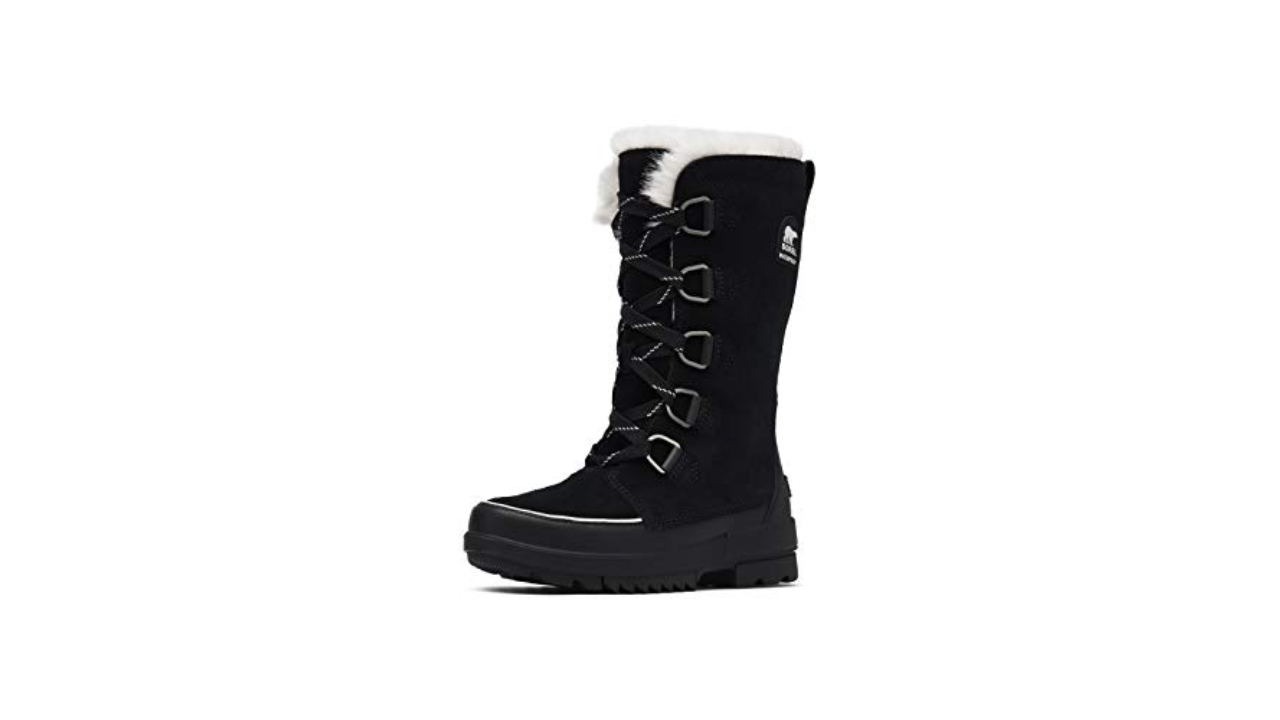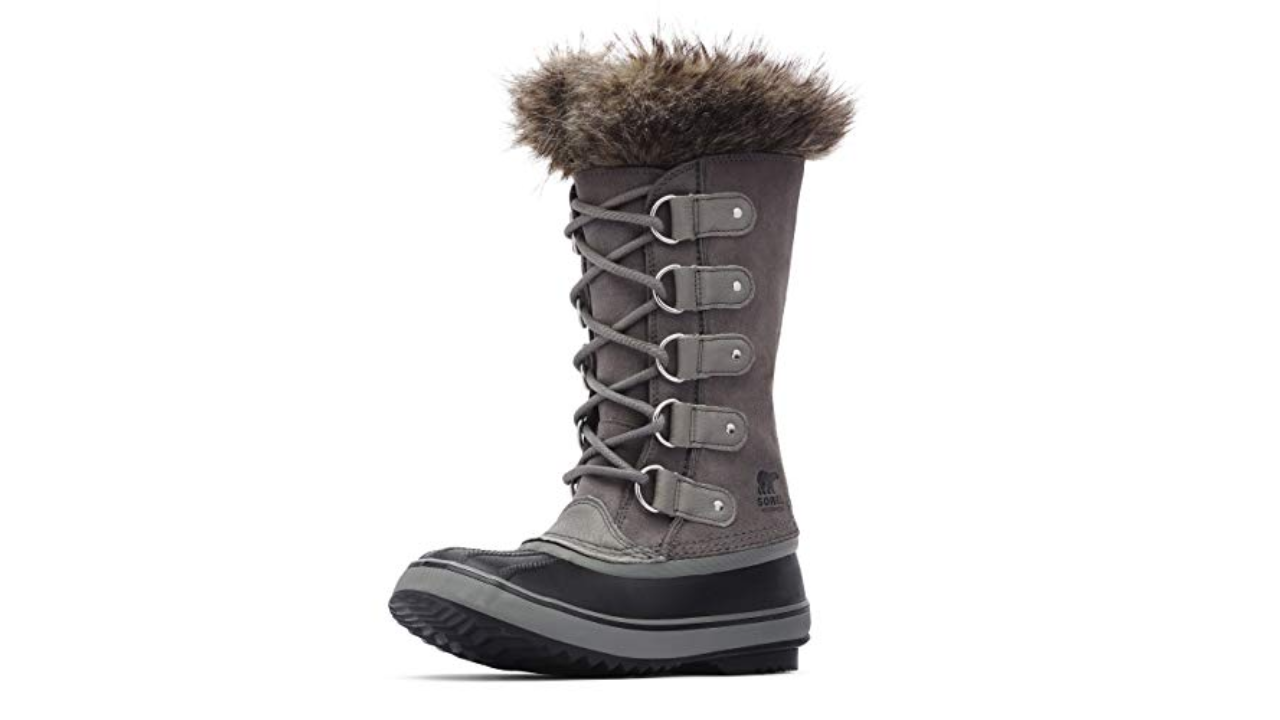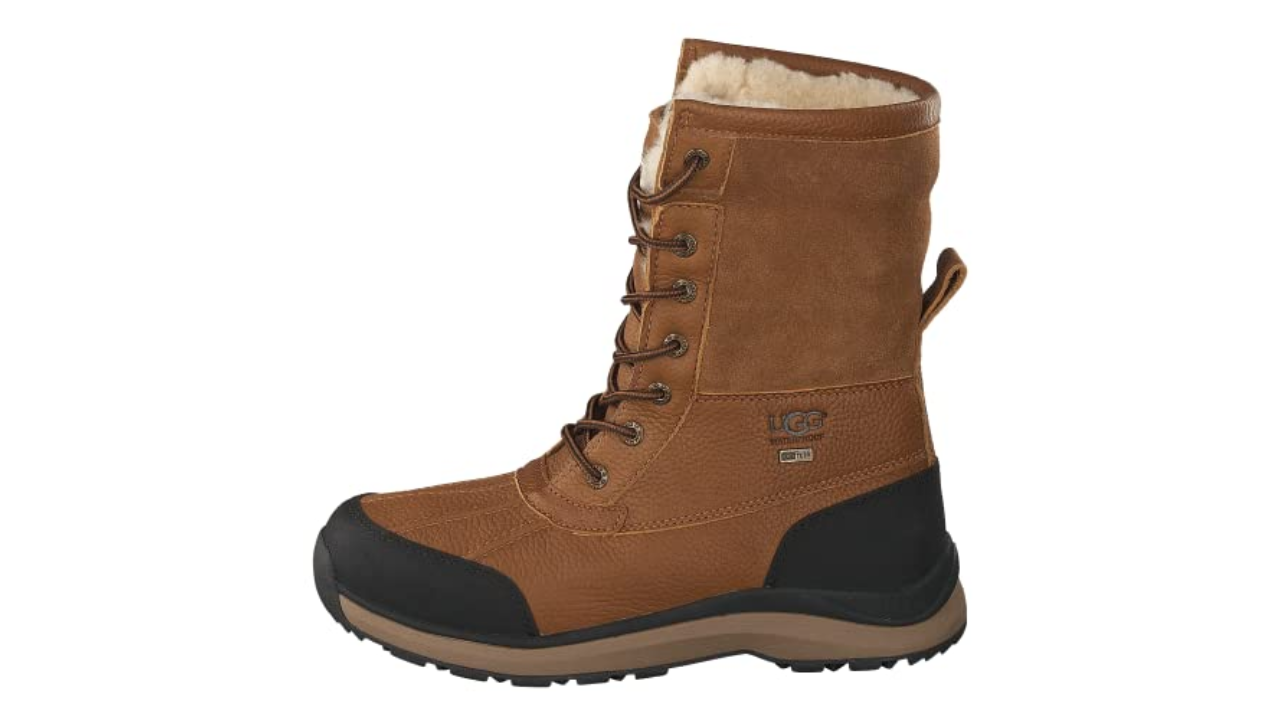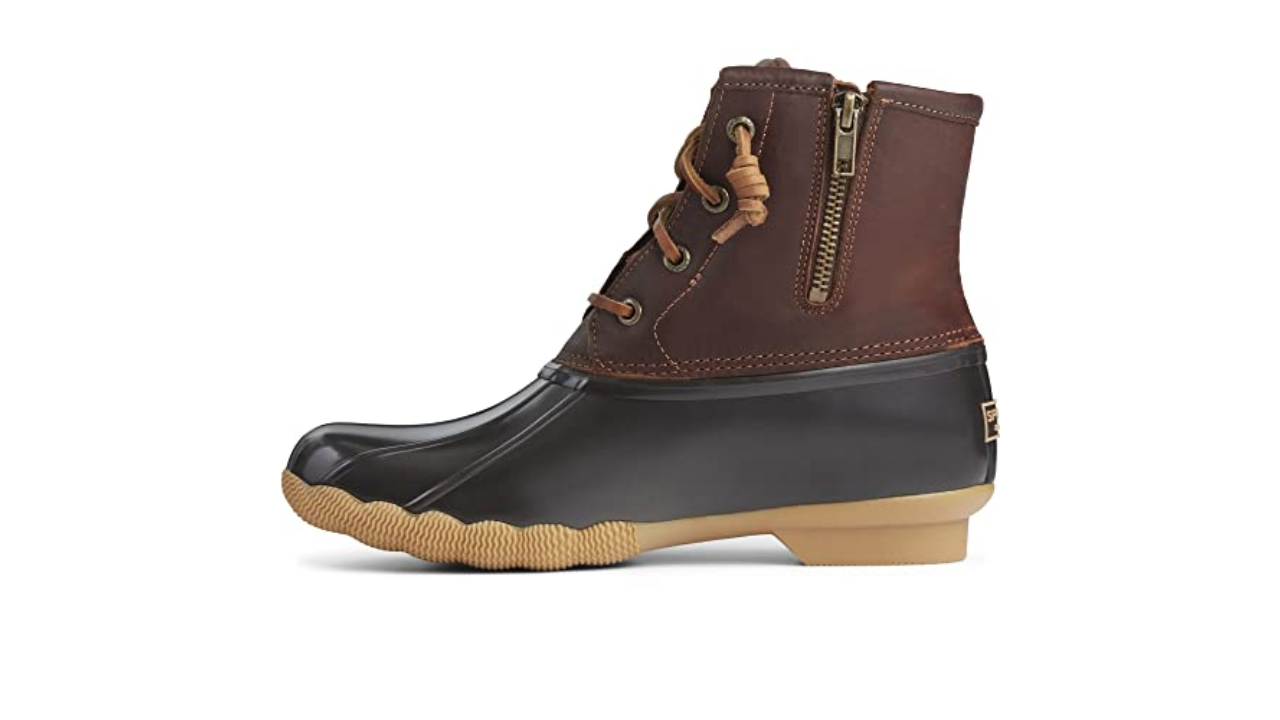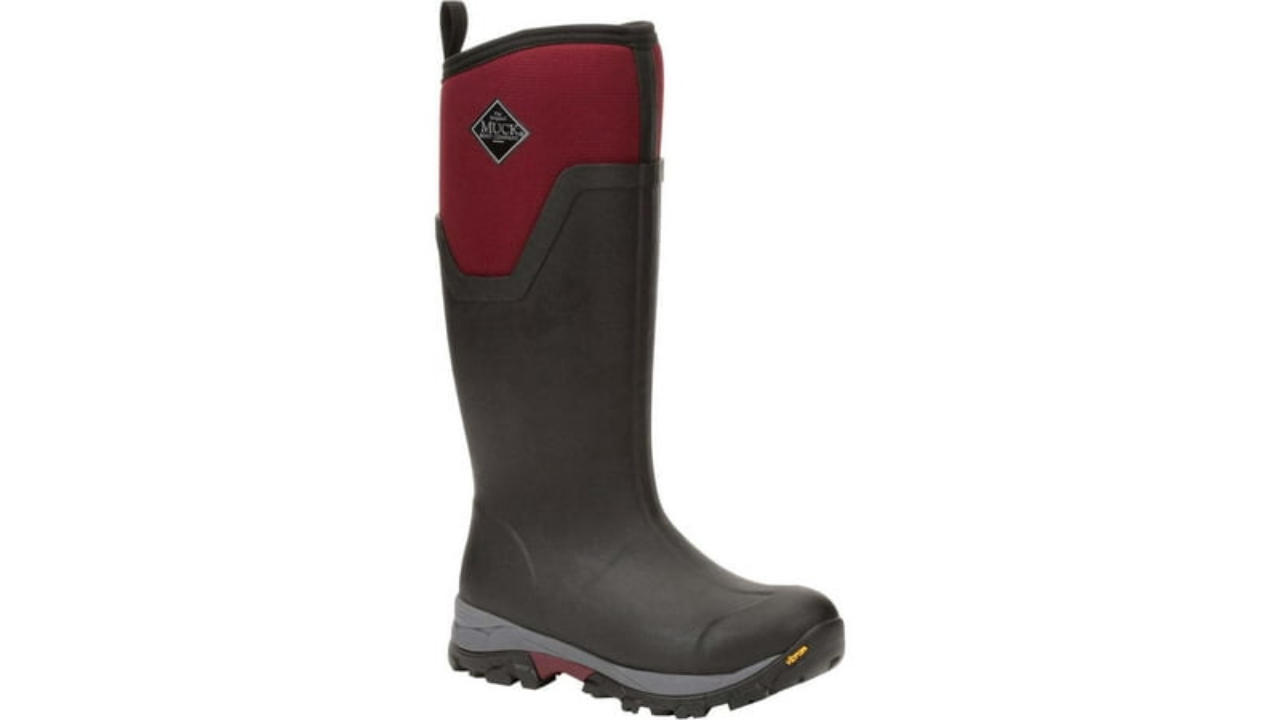If you live in an area where winter weather strikes, finding reliable snow boots that’ll keep your feet warm and dry is probably at the top of your shopping list (as it should be!). A solid pair should provide insulation while protecting against the harsh conditions that can come your way — think rugged soles to prevent slipping and sliding on icy sidewalks and waterproof materials to shield your feet from all that slush.
Instead of wasting time and money buying winter boots that aren’t as hardy as they claim, we consulted a team of podiatrists, outdoor enthusiasts, travel experts and our very own shopping editors to see which pairs are worth buying. The 15 best winter boots, including beloved brands like L.L.Bean, Ugg, North Face and Columbia, below deserve a coveted spot in your cold-weather wardrobe.
Pros: Warm, waterproof, comfortable, available in men’s and women’s sizes
Cons: Can be too hot to wear indoors
During a poll of our team’s favorite snow boots, three staff members listed these L.L.Beans as their go-to’s, including myself. Not only are the boots (which come in both men’s and women’s sizes) incredibly warm thanks to their cozy shearling lining, but they are waterproof too, so you can walk through snow and puddles without your feet getting wet. Each pair is hand-sewn in Maine, so they’re durable and built to last. Contributing editor, Lisa Schweitzer and I have both had a pair for several years and they are still looking good as new. The boots aren’t overly bulky, weighing less than four pounds. Plus, they have a rugged rubber sole that prevents you from slipping and sliding around. One caveat? Our managing editor Scott Simone said they can sometimes be too hot for indoors: “Definitely not the type of boot to wear to the office without bringing a change of shoes to avoid your feet sweating all day long.”
Pros: Tundra-rated, good traction, tall silhouette
Cons: No half-sizes
These babies are tundra-rated, so you can be sure that your feet will stay nice and warm. That’s probably why Backcountry gearhead Ashleigh McClary said they were one of her top choices for snowshoeing in deep snow. The tall boots are somehow both waterproof and breathable; a thick rubber sole with a honeycomb design offers excellent traction. Laceless, they’re easy to get on and off thanks to elastic toggles that let you make them as tight as you want (no more snow slipping inside!). Just be aware there are no half sizes, so the brand recommends sizing up if you’re not sure.
Pros: Affordable, cushioned, comfortable, slip-resistant
Cons: Some shoppers noted issues with the zipper
Travel blogger Nadia Podrabinek listed these fashionable-yet-functional boots as one of her top picks “due to their waterproof design and warmth retention.” Lined with faux rabbit fur for coziness, they have zipper and lace-up closures to prevent the elements from entering and a slip-resistant rubber sole. Hundreds of Amazon shoppers are fans of the cushioned insole for all-day comfort. “I bought these boots to wear in Quebec in January for a week,” one customer raved. “They rocked! The fur lining is all the way to the end of the toes and they are super comfortable. We walked over 10,000 steps a day and my feet never hurt once. I was able to wear just regular socks and my feet stayed extremely warm.”
Pros: Excellent traction, stability on ice
Cons: Expensive
Backcountry’s McClary also raves about these ultra-rugged Icebug boots that boast tacky traction for very icy terrain. “I can confidently and safely shovel my driveway and sidewalks and walk around icy parking lots knowing that I’ll be safe,” she told us. They zip up the front so they are super easy to take on and off; synthetic fleece and polyester insulation will keep you warm in freezing temperatures. One REI customer raved, “They’re comfy, super lightweight and stable on ice and packed snow. I actually took them out to a snowfield in the Rockies to test them out and was really impressed with the performance. The soles have built-in traction so they grip incredibly well, without the bulk and annoyance of external traction.”
Pros: Waterproof, warm, great traction
Cons: Pricey
Canadian sports enthusiast and skating boutique owner Georgy Lowell is a fan of these Columbia boots because they “are waterproof, insulated and offer excellent traction on snow and ice.” The waterproof wonders keep rain and snow out while letting your feet breathe. They pack in 200 grams of insulation (that’s a lot) and the brand’s patented heat-trapping technology. Shared one Zappos reviewer: “I ended up doing 5km of off-trail snowshoeing and was so happy with them. They’re supportive and my foot felt ‘hugged’ the entire time. The boots are light. Nice looking. Oh ya, and they’re really waterproof! I went up to my knee in a bog; between these and my gaiters my feet were bone dry.”
Pros: Super warm, comfortable, feet stay dry, good traction
Cons: Outside of shoe can get damp
Senior Beauty Editor Jennifer Romolini bought these boots for a month-long trip to Iceland in 2021 and loved how they held up. “I needed something warm and rugged for wet, high-windchill winter hikes and these were ideal. They come up high, which means you can walk in serious snow, but the best part of them is the stability — the sole is super sturdy on slippery surfaces.” Perhaps most notable was how toasty they kept her feet, thanks to 100 grams of insulation. “These are SUPER warm and sometimes a little too warm,” she said. “They could be more stylish, but when you’re desperate for warmth in a snowpocalypse, you don’t really care.” While the boots are waterproof enough to never get her feet wet, she added that over time the suede on the outside can become soaked in snowy/rainy conditions.
Pros: Celeb-approved, fashionable, waterproof, warm
Cons: Expensive, on the heavy side
These Sorels are so cute even Jennifer Aniston has been spotted in them. That’s why McClary said the popular boots are her most stylish pick: “For winter fashion, you can’t go wrong with the classic Sorel Joan of Arctic Boots. They are incredibly warm and look so cool! I have sold more of these than any other boots while working at Backcountry.” The faux-fur trimmed winners are waterproof, seam-sealed and comfort-rated to -25 degrees Fahrenheit, meaning they will keep your feet completely dry and seriously warm in even the most frigid conditions. Executive editor Nicole Sforza is also a fan. She’s owned them for 10+ years and said: “These are the quintessential snow boots — they’re durable, lace up like an ice skate so feel really secure and they have cute faux fur peeking out from the top. They’ll actually improve a winter outfit, not take away from it! Very grippy at the bottom for when streets are slick.” She added that they’re not the lightest option, however — they do add weight to your steps (maybe a good thing?!).
Pros: Very warm, good traction, waterproof
Cons: Expensive
These Oboz boots are another one of McClary’s picks for wearing in deep snow and it’s easy to see why. Along with 400g of insulation to keep your feet extremely warm in arctic temperatures, the shoes have a thick rubber sole and a liner that makes them fully waterproof and breathable. One Oboz shopper wrote: “This boot outdid itself in performance, quality and durability. I went to Latvia for a month in February and was met with all kinds of winter conditions, from freezing rain to a downpour of snow. This boot continued to perform. I would walk over seven miles and my feet were still warm and dry by the end of the day.”
Pros: Warm, water-repellent, comfortable
Cons: Not tall enough for deep snow
For small doses of the outdoors, McClary recommends these cuties from The North Face. “They’re a great option to keep at the door for quick trips outside when you don’t want to lace and unlace your boots. For all of the days I’ll be driving up to the ski mountains that aren’t crazy icy, you’ll find me wearing these,” she explained. The boots are easy to slip on and off and have a toggle cuff at the top that lets you trap in warmth and find a secure fit. Plus, they have a water-repellent finish to keep your feet dry.
Pros: Comfortable, not bulky, waterproof
Cons: Expensive
This pair by Ugg is one of Amazon’s most popular snow boots with an impressive 4.6-star rating from over 3,500 reviewers. They have the same cozy shearling lining as the classic Ugg boots, with an added rugged outsole and waterproof membrane to make them more effective in the snow. Senior commerce writer Kristin Granero loves them because “the lining is incredibly toasty (like a warmer for your feet), and the design is versatile. A winter staple, don’t be surprised to find yourself wearing them everywhere.” There are eight colors to choose from, so you can easily find a style that pairs well with your winter wardrobe.
Pros: Comfortable, waterproof, non-slip
Cons: Not technically snow boots, so could be warmer
While these Sperry options are marketed as rain boots, deals writer Britt Ross has worn them for multiple winters with no issues. “They don’t come up too high, allowing for more mobility than taller boots, they keep my feet dry, have great traction and I think they look pretty cute with leggings/tights tucked into them,” she said. She does note that since they aren’t insulated like a typical snow boot, you will have to wear thicker socks for warmth. “Also, since they’re on the shorter side, I wouldn’t try walking through deep snow with them, but they serve my needs (walking on slippery sidewalks) well.”
$110 at Amazon$70 at SHOEBACCA.com$75 at Eastern Mountain Sports
Pros: Affordable, lightweight, comfortable
Cons: Only available in black
These cute snow boots by Totes prove you don’t need to spend a ton of money on a great pair. Branded content and partnerships editor Rory Halperin has rocked them for a few winters now and raved, “They’re comfy to wear all day and are pretty light — some other snow boots I’ve had were way too heavy so I dreaded wearing them. I also like that they’re on the taller side — perfect for wading through snowy urban crosswalks. And the price is right.” She did note that while they work with leggings, other kinds of pants won’t easily tuck inside.
Pros: Fully waterproof, supportive, warm, great traction
Cons: Expensive, not tall enough for deep snow
If you’re looking to enjoy winter activities like hiking or snowshoeing, McClary recommends investing in these Lowa snow boots. “They are as waterproof as it gets, provide a dialed-in fit and plenty of support, have a grippy sole and lots of insulation,” she said. Along with a waterproof Gore-Tex (see FAQs, below) fleece lining for warmth, the boots boast a wool cuff trim to wick moisture away. The lug sole grips all types of terrain to prevent you from sliding around.
Pros: Comfortable, lightweight, water-resistant
Cons: Not suitable for deep snow
Deputy editor Izabella Zaydenberg has sported these Toms snow boots for two years and likes that “they’re not super chunky — they’re lightweight, pretty cute and keep my feet warm. I like that there are multiple colorways and the suede is very soft.” While you can’t wear the short boots in areas that get several feet of snow, Zaydenberg says “They work for city winters, though, and are good for that mucky gray slush we get a couple of days after snowfall.” She added, “Though they’re technically water-resistant and not fully waterproof, they keep my feet dry even when I accidentally step in a puddle.”
Pros: Tall, waterproof, great traction
Cons: Expensive
“I live in northern Utah and frequently encounter deep snow both at my home and at the ski resorts, so for those days I love a tall pull-on boot like the Muck Boots Arctic Ice Agat,” said McClary. “Ski resort parking lots often have ice, and these are great for that and deep snow. I also love having slip-on boots ready by the door for letting my dogs out.” The 100% waterproof gems have a fleece lining for warmth, a durable Vibram outsole (see FAQs, below) and a thick rubber sole for grip.
The reviews quoted above reflect the most recent versions at the time of publication.
FAQs
What factors should you consider when buying snow boots?
According to Backcountry Gearhead Ashleigh McClary, keep in mind how tall your boots need to be. If you’re in an area that gets a lot of snow that builds up fast, opt for a higher silhouette to prevent anything from seeping in; if you’re in a city that gets plowed and shoveled often, you can stick to shorter boots.
She said to also consider how much grip boots have on the bottom, the amount of insulation they have and the temperature they’re rated to: “How easy are they to put on/take off? What activities do you plan to do in them? How waterproof are they? And of course, how good do they look?”
Warmth
When it comes to finding a super cozy pair of snow boots, it’s all about the type of insulation. Canadian sports enthusiast and skating boutique owner Georgy Lowell told us the key is to look for “effective insulation materials such as Thinsulate, PrimaLoft or fleece lining. These provide warmth while ensuring breathability and moisture management.”
McClary added that the temperature rating is just as important (if not more) than the brand of insulation. “Any insulation over 150 grams is a good place to start,” she said. “The higher the number over that 150 grams, the warmer the boots will be.”
Traction
When it comes to traction, NYC and NJ-based podiatrist and owner of Dr. Brenner’s Rx Foot care products Dr. Hillary Brenner says, “For ice, you want the bottom of the shoe to have metal spikes, cleats or studs. And for walking in snow, you want the boot to have a non-slip rubber sole.”
Lowell recommends choosing pairs with an outsole that’s “crafted from robust and enduring materials such as Vibram or Michelin, as they feature a lug pattern that maximizes traction on icy and snowy surfaces.”
Waterproofing
Most winter boots are going to be waterproof, but it is always a good idea to verify. Dr. Brenner suggests “looking at the tongue of the shoe to confirm, though sometimes it will be written on the shoe itself or the sole.” McClary recommends looking for “tech specs and keywords in the product title like GTX (Gore-Tex) or WP (waterproof),” when shopping online. Lowell told us he also likes to read customer reviews as “owner’s experiences with a boot’s waterproofing in actual use are frequently instructive.”
Fit
Travel blogger Nadia Podrabinek suggests going up a size in boots in case you need to wear thicker socks for added warmth. “This is because thermal socks, typically worn in colder climates, are bulkier than regular socks. Having an extra bit of room in your boots can enhance comfort and circulation, keeping your feet warm and cozy during your winter travels,” she told us.
Just remember to consider the climate when determining if you need thicker socks, McClary told us. Because “if your feet get too hot in the socks and sweat, your feet will actually be colder.” She added: “If you are planning to use the boots for a winter activity like hiking or snowshoeing, you’ll want the boots to fit similarly to your running shoes or hiking boots. But too much room in a boot will cause your foot to slip around, so you want to make sure you just have enough room for your foot to expand but nothing extra from side to side (laterally). If you’re going to be hiking or snowshoeing, you’ll also want to consider lace-up boots that can secure your foot into place vs slip-ons.”
Dr. Brenner shared with us her go-to trick for accurate sizing. “To get the best fit, make sure the tip of your thumb can fit between the end of the shoes and the end of your longest toe. If you’re wearing thick socks, the boot should fit a bit tighter and if you’re wearing thin socks, the boot should fit a bit looser.”
Our team of experts:

Olivia Martin celebrates the art of living well in her lifestyle articles. She explores topics ranging from travel and fashion to home decor and culinary delights, offering inspiration for readers seeking a balanced and enjoyable lifestyle.


